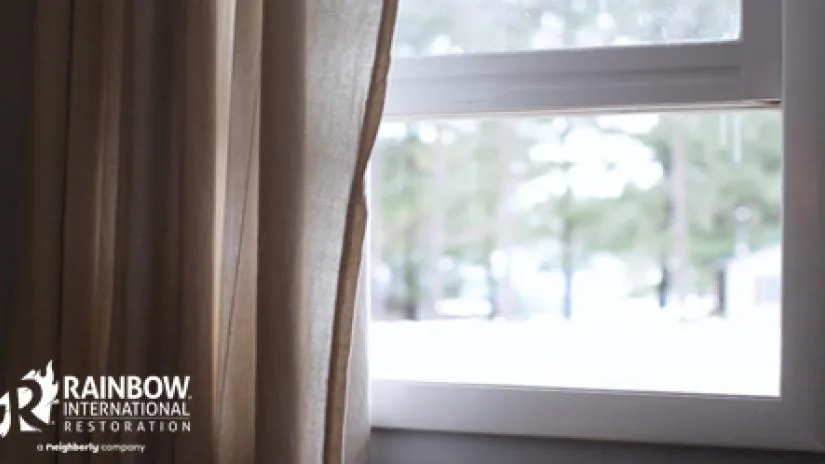
Rainbow Restoration offers some expert advice on revitalizing drab drapes and maintaining their appearance.
|
Drapes and curtains help tie a room together and add a nice decorative touch. However, over time they accumulate dirt and dust, which can degrade the quality and look of the fabric. Dirty drapes and curtains can also negatively affect your indoor air quality. Regular drape cleaning is necessary to keep the room looking great and to prolong the fabric life, but this isn’t always as simple as tossing them in the washing machine. Learn how to clean drapes and curtains at home with these tips from our experts at Rainbow Restoration.
How to Clean Drapes and Curtains
Hopefully, the drapes have tags with cleaning symbols. Look for tags along the seams or in the corners. If you can’t find a tag, try to identify the fabric so you can determine the best cleaning practices. Water-safe fabrics will have a “W” on the cleaning tag. Only use cleaning solvents or dry-cleaning if you see an “S” on the fabric tag. “S/W” means both water and cleaning solvents can be used to clean the fabric. If see an “X” on the tag, you should only use a stiff brush or vacuum to clean the drapes.
1) Dry-Clean-Only Fabrics
Dry-clean-only fabrics such as wool, silk or polished cotton require special attention. Prevent soil buildup and remove stains on these fabrics by spot-cleaning with a mild solvent cleaner or upholstery shampoo on a soft brush. Do not saturate the fabric with liquid. Should water come in contact with the fabric, dry it immediately with a dry towel and a blow dryer. You may also use foam from a mild detergent to spot-clean, provided the brush you use is not saturated with water.
2) Water-Safe Fabrics
Nylon, cotton or polyester are more robust fabrics and can usually be cleaned with water at home. However, water-safe doesn’t always mean machine-safe. You may use a steam cleaner or water-soluble fabric cleaner on the fabric. If there are sequins, lace or decorative stitching, dry-cleaning is the best option. If the fabric has a high pile, restore it by brushing with a stiff, non-metallic brush.
3) Machine-Safe Fabrics
Identify machine-safe fabrics by finding “WASH” on the fabric tag. Proceed with caution if you’re not certain your drapes or curtains are machine-safe. Remove all hardware and hooks before washing drapes and curtains in a washing machine. Use a gentle wash cycle with a mild detergent. Always use cold water to prevent shrinking, and either air-dry or tumble-dry without heat. Sheer fabrics, delicate fabrics, or lace should be washed by hand or, at the very least, washed inside a garment bag in a washing machine.
To wash curtains or drapes by hand, fill a large bucket with cold water and detergent. Soak the fabric in the bucket for up to thirty minutes, agitating it every five minutes. Scrub the fabric against itself to remove dirt or stains. If the fabric is heavily soiled, replace the water and repeat these steps. Finish by rinsing the fabric in fresh, cold water until the water is clear and there are no suds.
Keep Them Clean: How Often to Clean & Maintain Drapes
Once you’ve gone through the effort to clean your drapes, try to establish a weekly routine to keep them clean. Use an upholstery brush on your vacuum to remove dust and dirt once a week. Give them a deeper cleaning every three to six months. Cleaning your curtains regularly reduces dust in your home, which improves indoor air quality.
Bring the Dry Cleaners to Your Home
What if the dry cleaners could come to your door? If you don’t have time to clean drapes or visit the dry cleaners, Rainbow Restoration can provide upholstery cleaning services. Our trustworthy professionals utilize advanced equipment and techniques to bring your dirty curtains and drapes back to life. We follow the upholstery or fabric manufacturer’s directions closely to ensure your drapes or curtains look as good as new. Improve indoor air quality, cut down on dust, and give your home the clean look it deserves. Our experts are IICRC certified to ensure consistent and reliable results. Just call us today, or schedule an appointment online for a cleaner home!
